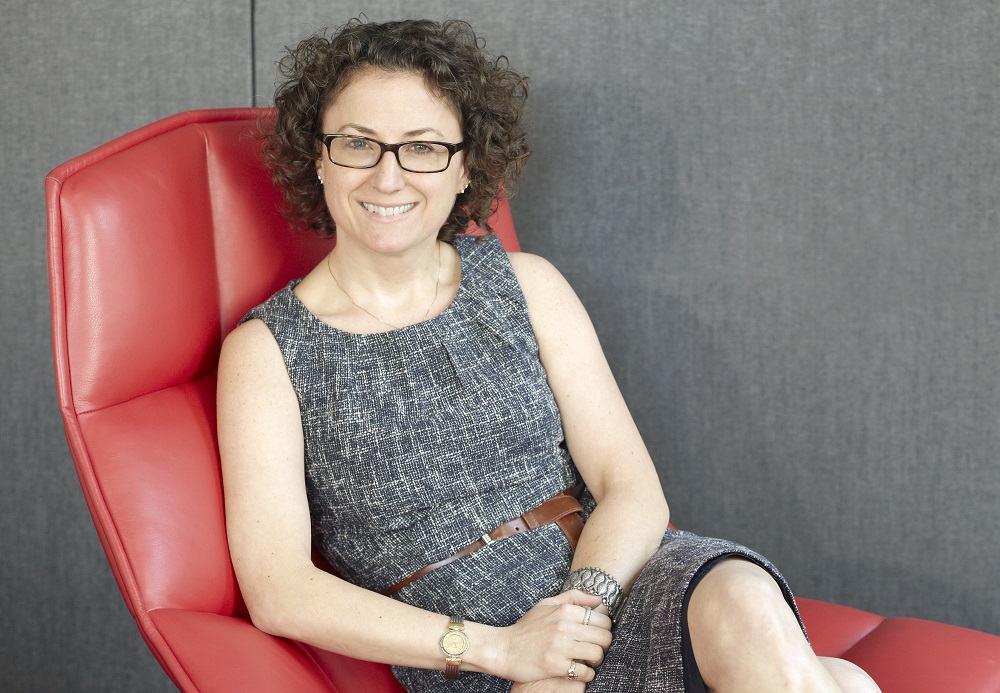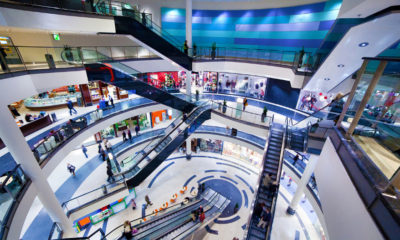Selfridges hosted this year’s Global Department Store Summit, organized by the Intercontinental Group of Department Stores, that took place in London, May 24 and 25. As usual, the event aggregated C-suite executives as speakers and panelists to share what they respectively see as their challenges, opportunities and strategies to succeed. I always leave this conference filled with insight, and I’m amazed at the extreme openness of the collegial sharing that takes place.
The theme of the conference was “The Power of Luxury Redefined,” paralleling the theme of the exhibit entitled “The Flipside,” an exploration of “Radical Luxury” at the Old Selfridges Hotel. The conference started for a lucky few, present company included, with an evening at the exhibit just prior to its conclusion. The multisensory exhibition showcased installations by a diverse group of creatives, ranging from Google, Gareth Pugh, Louis Vuitton and world-class bartender Ryan Chetiyawardana, aka “Mr. Lyan”. The installations ranged from the luxury of highly personalized moments – Mr. Lyan recommending a custom crafted cocktail based on personality traits – to the idea of scarcity as luxury – Byredo looked at a future where water becomes a precious element. This latter installation was foreshadowed by the final discussion of the conference. Each installation was thought provoking, and the range of perspectives gave a wide point of view into the idea of luxury.
The conference kicked off on Thursday morning with a stage-setting greeting by the Deputy Mayor of London for Business, Rajesh Agrawal, and a warm welcome to London by Selfridges’ Managing Director Anne Pitcher. The first session, entitled “Luxury at all Levels,” encompassed two widely diverse talks. The initial presentation was entitled “Luxury in Literature,” given by Ms. Ella Berthoud, a bibliotherapist at The School of Life, U.K. Her presentation seemed to be an outgrowth of The Flipside exhibit, wherein she examined how one can live a life of luxury vicariously through books and the characters within. I learned a new term during the presentation: sybarite (a person devoted to luxury and pleasure). The examples given glimpsed “the flipside” of the story lines:
-
Homer’s “Odyssey”: the indulgences of the Lotus Eaters.
-
Shakespeare’s “Anthony and Cleopatra”: the power to choose and determine one’s fate.
-
Huxley’s “Brave New World”: the privilege of individualism.
-
And from “A Gentleman in Moscow”: the luxury of freedom.
Following this creative view for describing luxury, Tammy Smulders, President of Vice Fashion & Luxury Group, U.K., shared ideas around exploring personal identity through an individual’s style. She espoused views on the paradigm that, in the past, it was about “what I have,” but how in the future (which seems to be now), it will be about “what I am.” Further to this point, brands will become the vehicle for personal expression, and stores in turn, will become the cultural embassies for the brands. She went on to say that until recently, a brand’s history was its strength; it’s not its values that will garner loyalty and prove worthiness.
The second session focused on communication, for both internal and external messaging. Steve Hatch, Facebook’s Vice President Northern Europe, talked about “Success in the Age of Acceleration.” His message was that companies must focus on people to succeed, not on technology. Steve Woodward, President and Chief Merchant at Crate & Barrel, challenged the executives in the audience to know the foundation of who and what their businesses are, and to stay true to the company mission. In Crate & Barrel’s case, it’s to bring joy through what they do. He shared how Crate & Barrel is rigorous about consistency. He also shared insights to how they are evolving: they have moved from “knowing all” to “having a lot to learn,” and aren’t focused on being the biggest, but the best — and how they have created a culture of “yes.” With the regard to the last point, Woodward shared that rulebooks tend to be about saying “no,” and that Crate & Barrel has cultivated an environment of creativity, where experimentation is encouraged. It was here that I rejoiced – finally, someone was talking about a culture of innovation, and not just iteration disguised as innovation.
Day two of the conference turned its eye toward deeper learnings about the softer side of things: the customer journey, the power of the environmental experience and social conscience. Anne Pitcher talked about the stewardship that is intrinsic to Selfridges’ mission. She encouraged retailers to reach out beyond the walls of their stores and become “placemakers,” in order to help build communities and reinvigorate the neighborhoods where their stores reside. Like Woodward, she also talked about the value of experimentation, of making investments to elevate the customer experience, of utilizing prototyping to “get it right,” and to remember it should be about fun. During the Q&A session, I asked Pitcher how Selfridges measures the ROI of the events and exhibitions they host. Her response was candid and genuine, explaining that they don’t measure ROI in a specific way, but that their strategy is to drive traffic, and that “a crowded store is always a good thing.”
Advertisement
On the role of environments in experience, designers Tony Chi and Kelly Hoppen shared their perspectives. Chi espoused that art is a message, and that crafting a story allows people to be a part of it relationally. Chi also shared that spaces must be transformable – that single-use spaces no longer work. Hoppen, a self-proclaimed traditionalist, declared that department stores should get back to the traditional: perfect the experience and leave online to the “fast and task” (a great line, by the way). She admonished retailers for having too much stuff in their stores and emphasized purposeful curation through knowledge of the customer.
Some other notable ideas:
-
Wellness is the last luxury frontier.
-
Man is the new woman.
-
Trainers are the new handbags, but better. Like denim, they’re here to stay.
Circling back to where I started, the conference closed with a session called “Championing Mindful Consumption.” Lord Stuart Rose, former Executive Chair of Marks & Spencer, shared the “Plan A” initiative he put in place at M&S during his tenure there. Named to inspire to do better than falling back on a Plan B after viewing Al Gore’s “An Inconvenient Truth,” he drove the company toward greater profitability while increasing their sustainability goals. Other retailers could do the same, providing the bottom line can thrive and do good at the same time.
Following this, Alannah Weston, Deputy Chairman of the Selfridges Group, started her presentation referencing a Patek Philippe ad: we don’t own this watch, we take care of it for our children. She put the challenge out there to all retailers to do better given that retailers are the third largest contributors to global climate change. Weston shared Selfridges’ seven points of running a sustainable business:
-
Do the right thing
-
Go beyond compliance
-
Protect supply
-
Foster sustainable growth
-
Attract the best people
-
Help customers build trust
-
Maintain brand integrity
She cautioned retailers against defining luxury by rarity and scarcity. (I promised I’d circle back to The Flipside!)
I’ll close with a quote from Burt Tansky, former CEO of Neiman Marcus Group, which was rehashed during the conference: “You can easily sell them once, but how do you bring them back to sell it twice?”
Advertisement
I hope these insights provide opportunities for those reading this to discover the answer.
Kathleen Jordan, AIA, CID, LEED AP, is a principal in Gensler’s Charlotte, N.C., office, and a leader of its retail practice with over 24 years of experience across the United States and internationally. Jordan has led a broad range of retail design projects as both an outside consultant and as an in-house designer. She has led projects from merchandising and design development all the way through construction documentation and administration, and many of her projects have earned national and international design awards. Contact her at kathleen_jordan@gensler.com.


 Headlines1 week ago
Headlines1 week ago
 Photo Gallery22 hours ago
Photo Gallery22 hours ago
 Headlines2 weeks ago
Headlines2 weeks ago
 Headlines2 weeks ago
Headlines2 weeks ago
 Sector Spotlight1 week ago
Sector Spotlight1 week ago
 Headlines1 week ago
Headlines1 week ago
 Headlines2 weeks ago
Headlines2 weeks ago
 Headlines1 week ago
Headlines1 week ago














